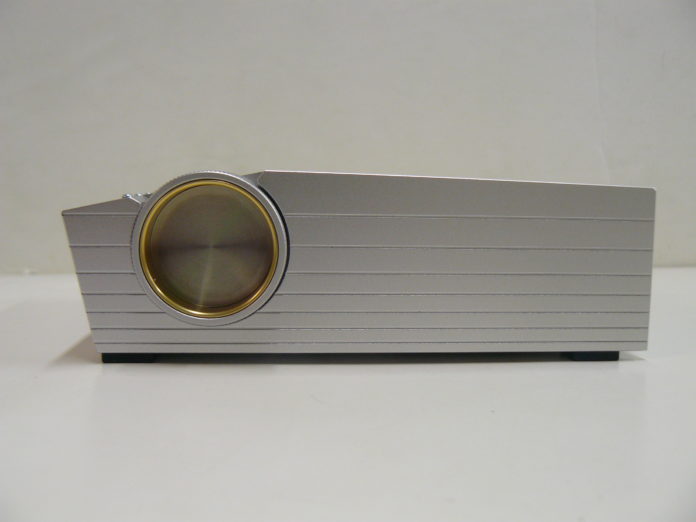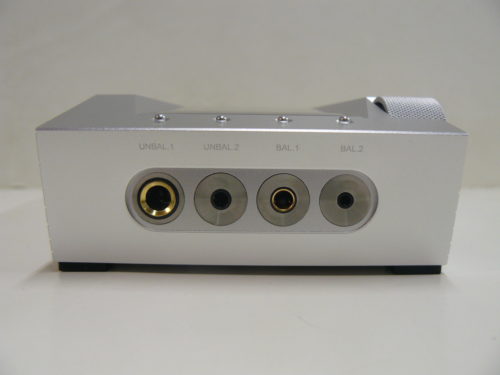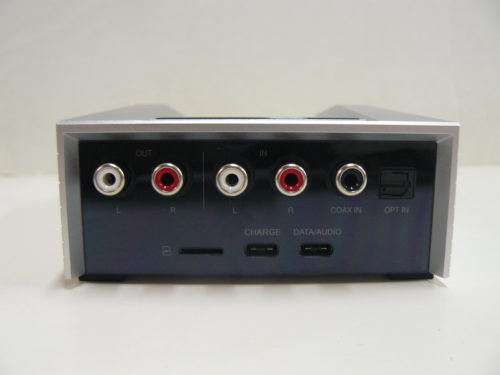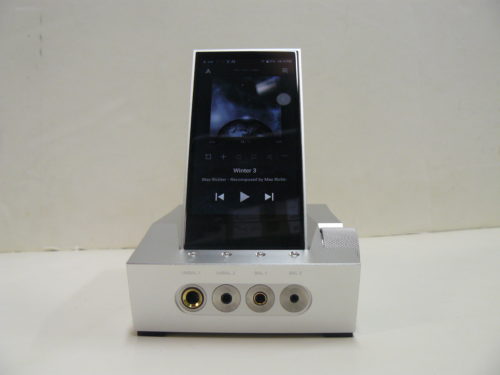Astell and Kern have been releasing some very interesting products recently. They achieved great success with the SP2000T while also breaking out into other ventures, like releasing their first proper IEM with the Zero1. Although they’re still mainly known for their high-end DAPs A&K keeps on surprising us with a larger variety of devices to add to their expanding library. When they announced that they were making an amplifier I didn’t know what to expect. Then I got to see what the ACRO CA1000 actually looks like at it piqued my interest immediately. With this unit, A&K is combining a desktop amp with one of their DAPs, aiming to deliver the benefits of both. This unique design comes at a cost though, it will set you back $2,199. Is the Acro CA1000 worth such a pretty penny?
What You Get
- ACRO CA1000 portable amp
- USB type C cable
- Quick start guide
- Warranty
Build
It wouldn’t be an Astell and Kern product if it didn’t have edges that can take your eye out. In all seriousness though, I do appreciate A&K sticking to a specific aesthetic no matter what kind of product it is. It’s rare to see such a sleek and futuristic design for a device like this in such a compact fashion, especially for a system as unique as this. It features a simple layout of its ins and outs in a very neat and tidy fashion. The volume dial is especially loose and it feels great to use. The Acro will look fantastic on any desktop surface. Everything I’ve described mainly resides on the amp part of the Acro, but the DAP part is almost one and the same. There’s a screen that is attached to the amp that you can pull up, and it stands stiffly for you to use effectively.
In terms of its connections, the Acro houses a ton of options for you. On its front end, the Acro holds balanced and unbalanced headphone inputs, with quarter-inch, 3.5mm, 4.4mm, and 2.5mm. The back has a few options as well, with RCA ins and outs, coax in, and optical in. You’ll also find two USB type C ports for charging and data, as well as a slot for micro SD cards.
Design
Inside of this system is an ESS906AS quad-DAC capable of supporting 32bit/384kHz PCM and Native DSD512 playback. Their Teraton Alpha chip also assists playback with power management and helps eliminate unwanted noise and distortion. You also have the latest in Bluetooth support with 24-bit CODECs like Qualcomm aptX HD and LDAC. Unlike many amplifiers, the Acro doesn’t need a power source to operate. It runs strictly on battery power built-in to the system. You’ll be able to enjoy the Acro for up to 10 hours off a single charge when listening to standard lossless CD-quality tracks.
Sound Impressions
We know what to expect out of the sound signature these devices bring but looking at the CA 1000 it’s reasonable to expect something more. What it really comes down to is if you’re looking for a truly dedicated amp or a DAP you can use mostly at home. After listening to the CA1000 for quite some time, I think I can confidently say the answer is the latter. A&K’s DAPs are known to be good reference devices that offer up a level of fidelity that feels true to the indented sound mix, and the CA1000 is no different in its response. Most tracks were displayed with solid positioning that felt clear and concise, with plenty of air in between to emphasize spaciousness. It’s exactly the type of soundstage I expect from A&K but I felt the depth even more here. Switching between the Meze Elite and T+A Solitaire P, I got what seemed to be a more exaggerated sense of layering, with frequencies stacked above and below you, heightening the overall dimension of the sound signature. These headphones definitely benefited the most from the Acro’s soundstage, but even IEMs felt like they were stretched out considerably.
For open-back headphones, the imaging is very much like a dome, surrounding you in musicality, while IEMs expand with a more linear sense of width. While the soundstage features the most colorful aspects of the sound signature, frequencies ranges like the low-end are very clean and controlled. Their timbre offers a realistic performance that doesn’t boost, but still provides a good amount of drive and impact. It’s a smoother, more natural performance as you might expect from an A&K device, and I was left happy with its natural clarity. The midrange is nice and full, with a real sense of complete detail. It’s the type of tonality where you feel like nothing is being left out, giving you the complete potential of your headphones. You also get a good amount of neutrality from the treble, delivering some flat and even characteristics while being totally digestible.
My only main concern with the system as a whole is power. The Acro drives all types of headphones nicely, but it’s pretty standard for A&K DAPs. I was expecting more than that considering this is a whole amplifier. Even when operating in super-high gain mode I was getting the volume warning level while I was barely at a comfortable gain. This is far from a major gripe though, as the system still gets there with plenty of headroom to spare, and of course, IEMs won’t encounter this issue at all, even ones that might be harder to drive.
By far one of the Acro’s best features is its Crossfeed, which can be found in the settings menu right under the EQ. You can play around with a few different options to adjust the shelf, which has its greatest effect on the soundstage. It really opens up the sound field in a way that adds even more separation and depth to the imaging. This creates a sonic environment that feels like no other, and it’s completely customizable.
Summary
The Acro CA1000 is one of a kind. It combines two audiophile experiences and molds them together into one device. This works to A&K’s success, as it delivers exceptional performance both sonically and in terms of user experience. It’s the perfect combination of a high-end DAP and a desktop amplifier, even though I could have used a bit more in terms of power. The price is a bit of an ask, but for those that follow A&K and their standard level of quality will be sure to find some value in this one of a kind device.
| Pros | Cons |
|
|
The Astell & Kern ACRO CA1000 is available at Audio46.
Compare the ranking of various headphones, earbuds and in-ear monitors using our tools.
Discuss this, and much more, over on our forum.
---MAJORHIFI may receive commissions from retail offers.

















